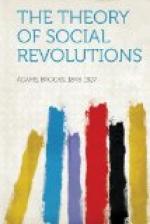Installed early in 1791, not a year elapsed before these magistrates became as ill at ease as had been those whom they displaced, and in March, 1792, Jean Debry formally demanded their recall, although their terms properly were to expire in 1796. During the summer of 1792 they sank into contempt and, after the massacres, the Legislative Assembly, just before its dissolution, provided for a new constituency for the judicial elections. This they degraded so far that, out of fifty-one magistrates to be chosen in Paris, only twelve were professionally trained. Nor did the new courts inspire respect. After the 10th of August one or two special tribunals were organized to try the Swiss Guard who surrendered in the Palace, and other political offenders, but these proved to be so ineffective that Marat thrust them aside, and substituted for them his gangs of murderers. No true and permanent political court was evolved before Danton had to deal with the treason of Dumouriez, nor was this tribunal perfected before Danton gave way to the Committee of Public Safety, when French revolutionary society became incandescent, through universal attack from without and through insurrection within.
Danton, though an orator and a lawyer, possibly even a statesman, was not competent to cope with an emergency which exacted from a minister administrative genius like that of Carnot. Danton’s story may be briefly told. At once after Valmy the Convention established the Republic; on January 21, 1793, Louis was beheaded; and between these two events a new movement had occurred. The Revolutionists felt intuitively that, if they remained shut up at home, with enemies without and traitors within, they would be lost. If the new ideas were sound they would spread, and Valmy had proved to them that those ideas had already weakened the invading armies. Danton declared for the natural boundaries of France,—the Rhine, the Alps, and the ocean,—and the Convention, on January 29, 1793, threw Dumouriez on Holland. This provoked war with England, and




